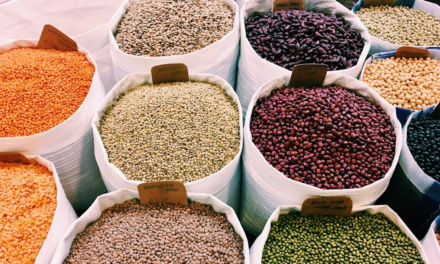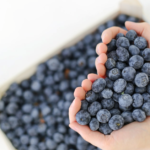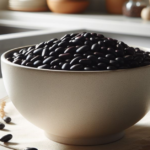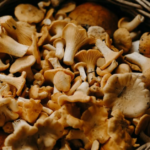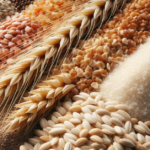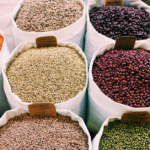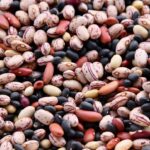Unassuming yet remarkably powerful, mushrooms have long been celebrated for their culinary versatility and distinctive flavors. However, these unsung heroes of the produce aisle hold a secret that extends far beyond their gustatory delights. For people living with diabetes, mushrooms can be a a culinary treasure, offering a natural and delicious way to support blood sugar management and overall metabolic health.
From their low glycemic impact to their potential to enhance insulin sensitivity, these humble fungi pack a nutritional punch that has earned them a well-deserved place in the diabetic diet. Join us as we explore the fascinating world of culinary mushrooms and unlock their hidden superpowers in the battle against this pervasive health condition.
Culinary mushrooms, which are found in nature, are considered superfoods due to their natural properties. They are not only low in calories but also contain high amounts of dietary fibers, making them a crucial component of a diet suitable for individuals with diabetes. With its fiber content, mushrooms have the ability to support the body in slowing down digestion and the absorption of sugar into the bloodstream, which aids in the steady control of blood glucose levels.
The Glycemic Index of Mushrooms
Mushrooms are uniquely suited for diabetic diets due to their exceptionally low glycemic index (GI) and glycemic load (GL). This means they release glucose into the bloodstream gradually, minimizing the risk of blood sugar spikes, which are particularly concerning for diabetics.
For instance, replacing high GI foods like white rice or potatoes with mushrooms in a meal can significantly lower the overall glycemic impact. A practical example is using finely chopped mushrooms as a filler or meat substitute in dishes like meatballs or burgers, which enhances the nutritional profile while keeping post-meal blood sugar levels more stable.
Mushrooms are not only delicious but also a rich source of essential vitamins and minerals that are vital for maintaining overall health. These include vitamin D, which is crucial for bone health, potassium for maintaining proper heart function, and iron to support the production of red blood cells.
Selenium, which is an essential mineral abundantly found in mushrooms, has potent antioxidant properties. These properties are crucial for protecting cells from damage and reducing the risk of diabetes-related complications, such as cardiovascular diseases and neuropathy.
Mushrooms at Work Lowering Blood Sugar Levels and Insulin Sensitivity
Recent studies have shed light on the remarkable potential of mushrooms in enhancing insulin sensitivity and managing blood sugar levels more effectively. Compounds such as polysaccharides, found abundantly in mushrooms, play a pivotal role in glucose metabolism, offering a natural adjunct to conventional treatment methods.
Specific varieties like King oyster and Lion’s mane mushrooms have been identified for their pronounced effects on metabolic health, potentially improving the body’s efficiency in regulating sugar levels and mitigating the risk of diabetes-related complications.
When it comes to incorporating mushrooms into a diabetic-friendly diet, preparation is key. Cooking mushrooms at lower temperatures helps maintain their rich nutritional profile, including the essential vitamins, minerals, and antioxidants crucial for diabetes care.
Sautéing them lightly with herbs and spices can make a flavorful, nutritious topping for whole-grain toast or a savory addition to an omelet.
The versatility of mushrooms in cooking makes them perfect for preparing meals that are suitable for individuals with diabetes. Their umami flavor and substantial texture make mushrooms an ideal meat substitute in recipes, allowing for the creation of delicious and diabetes-friendly meals like vegetarian mushroom burgers or mushroom-based pasta sauces that support blood glucose management.
Mushroom Varieties and Their Unique Benefits
While all edible mushrooms offer health benefits for diabetics, certain varieties stand out for their specific therapeutic properties. For instance:
- Reishi mushrooms have been studied for their potential to improve insulin sensitivity and lower blood sugar levels.
- Turkey tail mushrooms contain compounds that may help regulate glucose metabolism and reduce inflammation.
- Cordyceps mushrooms are rich in antioxidants and may help improve insulin resistance and cholesterol levels.
Here is a list of popular culinary mushrooms:
Button Mushrooms
- Mild flavor, versatile for various dishes[1][2]
- Includes white button and cremini/baby bella varieties[1][2][4]
Portobello Mushrooms
- Large, meaty caps with intense flavor[1]
- Mature version of cremini mushrooms[1][4]
- Great for grilling, stuffing, and meat substitutes[1][4]
Shiitake Mushrooms
- Native to East Asia, with rich umami flavor[1][2]
- Meaty yet buttery texture[1]
- Used in soups, stir-fries, noodle dishes[1][2]
Oyster Mushrooms
- Delicate, slightly sweet flavor[1][3]
- Velvety texture[3]Popular in Asian cuisines [1][3]
Maitake (Hen of the Woods) Mushrooms
- Robust, earthy flavor with meaty texture[1][3]
- Renowned for nutritional benefits[1]
Enoki Mushrooms
- Long, thin stems with small white caps[4]
- Crunchy texture, good for salads[4]
- Used in Asian soups and stir-fries[4]
Morel Mushrooms
- Distinctive honeycomb-shaped caps[4]
- Nutty, earthy flavor[2][4]
- Highly prized, often foraged from the wild[4]
Porcini Mushrooms
- Aromatic, woodsy flavor[4]
- Prized in Italian and French cuisines[4]
- Often dried and used to flavor broths/stews[4]
Chanterelle Mushrooms
- Fruity, peppery flavor[4]
- Trumpet-shaped, yellow caps[4]
- Used in sauces, soups, soufflés[4]
King Trumpet (King Oyster) Mushrooms
- Thick, meaty stems with umami flavor[3]
- Often used as meat substitute[3]
Safely Sourcing and Storing Mushrooms
To ensure you’re getting the most nutritional value from mushrooms, it’s essential to source them wisely and store them properly. Here are the key tips for properly storing edible mushrooms to keep them fresh for longer:
Refrigerator Storage
- Do not wash mushrooms before storing. The moisture will cause them to spoil faster.
- Store mushrooms in a paper bag or wrap them in a paper towel. This absorbs excess moisture and prevents sliminess.[2][4]
- Place the paper bag or wrapped mushrooms on a refrigerator shelf, not in the crisper drawer which is too moist.[2][3]
- Avoid storing mushrooms near strong-smelling foods as they will absorb odors.[2]
- Use within 5-7 days for best quality and freshness.[3]
Freezing Mushrooms
- For longer storage, mushrooms can be frozen for up to 12 months.[2]
- First, cook the mushrooms by sautéing or steaming until just cooked through.[2][4]
- Allow cooked mushrooms to cool, then transfer to an airtight freezer bag or vacuum seal bag.[2][4]
Dehydrating Mushrooms
- Mushrooms can also be dehydrated for very long-term storage using a dehydrator or air-drying method.[2]
- Once fully dried, store dehydrated mushrooms in an airtight container.[2]
- Rehydrate dried mushrooms before using in recipes.[2]
The key is keeping fresh mushrooms dry by absorbing excess moisture with paper products and avoiding washing until ready to use.[2][3][4] Proper refrigerator or freezer storage helps maximize their shelf life.
When shopping, look for fresh, firm mushrooms with intact caps and stems, and avoid those with signs of bruising or deterioration. Store mushrooms in a paper bag or a breathable container in the refrigerator, and use them within a few days for optimal freshness.
If you are foraging for mushrooms, know what to pick and what to leave alone. This can be dangerous terrain for novices. Several mushrooms should be avoided due to their harmful effects when ingested.
Here are some of the most dangerous ones:
1. Death Cap (Amanita phalloides): Contains alpha-amanitin, which can cause liver and kidney failure 6 to 24 hours after ingestion[3][4].
2. Destroying Angel (Amanita species): Highly toxic and can cause severe liver and kidney damage[4].
3. Fool’s Funnel (Clitocybe rivulosa): Contains muscarine, which can cause severe gastrointestinal distress and other symptoms[4].
4. Jack O’Lantern (Omphalotus olearius): Contains illudins, which can cause severe cramps and vomiting[4].
5. Fly Agaric (Amanita muscaria): Contains ibotenic acid and muscimol, which can cause hallucinations and other serious symptoms[4].
6. Panther Cap (Amanita pantherina): Contains similar toxins to the Fly Agaric and can cause severe neurological symptoms[4].
7. Dapperling (Leucocoprinus birnbaumii): Contains toxic compounds that can cause gastrointestinal distress[4].
8. Autumn Skullcap (Galerina marginata): Contains amatoxins, which can cause severe liver damage[4].
9. Conocybe filaris: Contains amatoxins, which can cause severe liver damage and death[1][4].
10. Amanita muscaria: Contains toxic compounds that can cause hallucinations and other serious symptoms[4].
Mushrooms with certain characteristics should generally be avoided by novice foragers:
- Mushrooms with white gills, a skirt or ring on the stem, and a bulbous or sack-like base (volva), as these are features of many deadly Amanita species[2].
- Mushrooms with red on the cap or stem, as some of these can be poisonous[2].
It is crucial to accurately identify any mushroom before consumption, as misidentification can lead to severe health consequences or death.
Practical Preparation Tips
When cooking mushrooms, it’s important to remember that specific methods of preparation can affect their nutritional value. Grilling, roasting, or sautéing with minimal oil are generally the best options for preserving the beneficial compounds in mushrooms. Avoid boiling or overcooking, as this can cause nutrient loss.
Incorporating a Variety of Mushrooms
To maximize the health benefits and add variety to your diabetic diet, consider incorporating a range of mushroom varieties. Experiment with different types, such as oyster, enoki, maitake, and crimini, to enjoy a diverse array of flavors and textures while reaping the unique advantages of each variety.
What About Mushroom Supplements?
For those who may struggle to incorporate enough mushrooms into their daily diet, mushroom supplements can be a convenient option. However, it’s essential to consult with a healthcare professional before adding any supplements to your regimen, as they may interact with medications or have unintended effects.
Addressing Potential Concerns and Precautions
While mushrooms offer numerous benefits for diabetics, it’s essential to be aware of a few potential concerns and precautions:
Medication Interactions: Some types of mushrooms, particularly medicinal varieties like reishi, may interact with certain medications, including diabetes medications, blood thinners, and immunosuppressants. It’s crucial to consult with a healthcare professional before adding new mushroom supplements or increasing mushroom intake, especially if you’re taking any prescription medications.
Digestive Issues: Due to their high fiber content, some individuals may experience digestive discomfort, such as bloating or gas, when introducing a significant amount of mushrooms into their diet. It’s recommended to start with small portions and gradually increase your intake to allow your body to adjust.
Allergy Concerns: While rare, some individuals may be allergic to specific types of mushrooms. If you experience any adverse reactions, such as itching, swelling, or difficulty breathing after consuming mushrooms, seek medical attention immediately.
Pregnancy and Breastfeeding: The safety of consuming certain medicinal mushroom varieties during pregnancy and breastfeeding has not been thoroughly established. It’s advisable to consult with a healthcare professional before incorporating these types of mushrooms into your diet during these periods.
By addressing these potential concerns and precautions, the article can provide a well-rounded perspective and empower readers to make informed decisions about incorporating mushrooms into their diabetic diet safely and effectively.
Recipes and Meal Ideas
To make it easier for diabetic readers to incorporate mushrooms into their daily meals, providing a selection of recipes and meal ideas can be extremely helpful. Here are some examples:
Mushroom Risotto (using low-GI grains like brown rice or barley)
Portobello Mushroom Burgers (served on whole-grain buns)
Grilled Mushroom Skewers (with a variety of mushroom types)
Creamy Mushroom Soup (using low-fat milk or plant-based alternatives)
Mushroom and Vegetable Stir-Fry (served over quinoa or cauliflower rice)
These recipes can highlight the versatility of mushrooms and demonstrate how they can be incorporated into appetizers, main dishes, and even desserts (for example, using mushroom powder as a flavor enhancer in diabetic-friendly baked goods).
For more information about the health benefits of mushrooms, you can watch the special edition (with new footage), of Fantastic Fungi, hosted by the Fantastic Fungi team and Food Revolution Network. You can get a curated recipe guide with 20 of Food Revolution Network’s favorite whole foods plant-based mushroom dishes from Food Revolution Networ
In conclusion, culinary mushrooms stand out as a beneficial food for individuals managing diabetes. Their low glycemic impact, rich nutritional profile, potential to improve insulin sensitivity, and anti-inflammatory properties make them an invaluable ally in the pursuit of wellness and disease prevention. By incorporating a variety of mushrooms into our daily meals, we can not only enjoy their natural umami flavor but also reap their numerous health benefits, making them a true secret weapon in our battle against diabetes.
Culinary Mushroom Citations
[1] https://www.rivieraproduce.com/the-best-types-of-culinary-mushrooms-and-why-you-need-them-in-your-kitchen/
[2] https://www.out-grow.com/blog/post/the-most-popular-types-of-edible-mushrooms.html
[3] https://lonestarmushrooms.com/blogs/mushroom-magazine/edible-mushrooms-tasty
[4] https://www.farmersalmanac.com/edible-mushrooms-how-to-cook-them
[5] https://www.epicurious.com/ingredients/types-of-mushrooms
Mushroom Storage Citations
[1] https://www.thekitchn.com/how-to-store-mushrooms-skills-showdown-23228612
[2] https://www.marthastewart.com/8327461/how-to-store-mushrooms
[3] https://www.allrecipes.com/how-to-store-mushrooms-7974521
[4] https://www.epicurious.com/expert-advice/how-to-store-mushrooms
[5] https://www.reddit.com/r/Frugal/comments/11yg05j/not_paperbag_method_storing_fresh_mushrooms_for/
Toxic Mushroom Citations
[1] https://www.healthline.com/nutrition/edible-mushrooms
[2] https://www.wildfooduk.com/articles/how-to-tell-the-difference-between-poisonous-and-edible-mushrooms/
[3] https://www.hollandandbarrett.com/the-health-hub/food-drink/nutrition/poisonous-mushrooms-to-avoid/
[4] https://www.youtube.com/watch?v=GqY3KY_6ayM
[5] https://www.eurofinsus.com/food-testing/resources/mushrooms-and-food-pathogen-risk/
Go here to see a list of Culinary Mushrooms to consider adding to your menus.
###
Remember, proactive self-care matters. Every step we take, every decision we make to better manage our diabetes makes a difference in how well and how long we live. Choose wisely. Live long, love life and be well.
The information on this site is not intended or implied to be a substitute for professional medical advice, diagnosis or treatment. The information on this site is for informational purposes only and is not intended to diagnose, treat, or cure any type of disease or condition. Diabetes Control Today does not guarantee any results for your specific situation. In support of our website, we may share resources offered by trusted partners. If you purchase products from any of these partners, the owners of this site may receive a portion of the proceeds. These affiliations allow us to continue bringing you valuable, potentially life-changing content.


